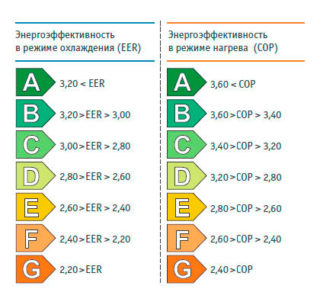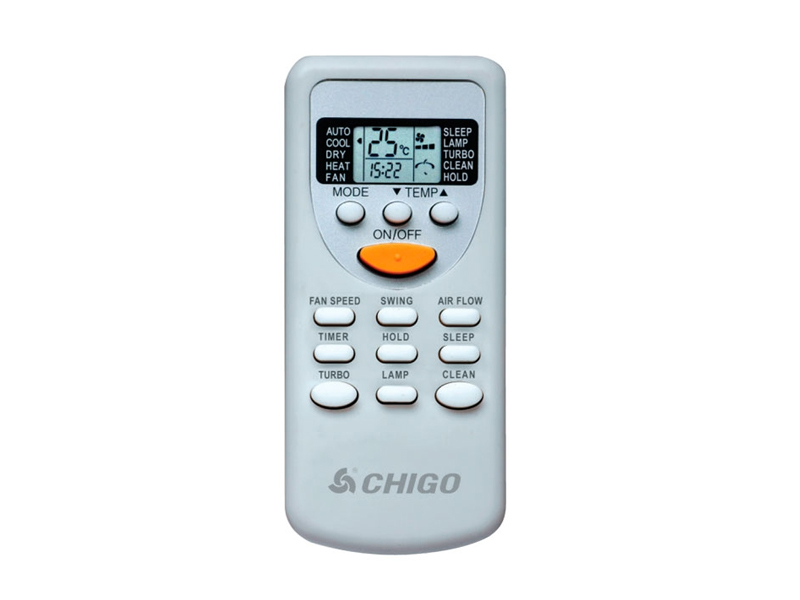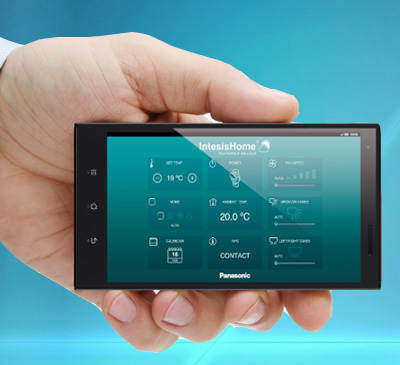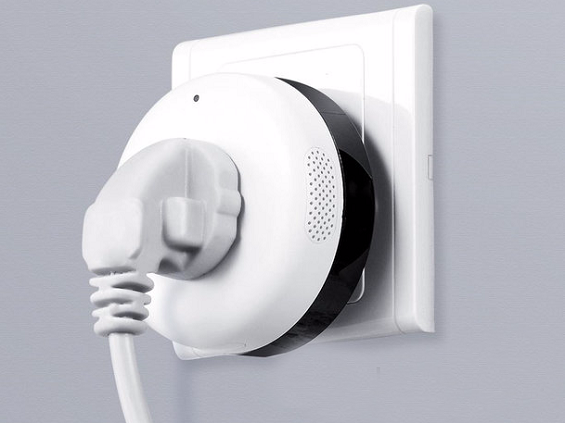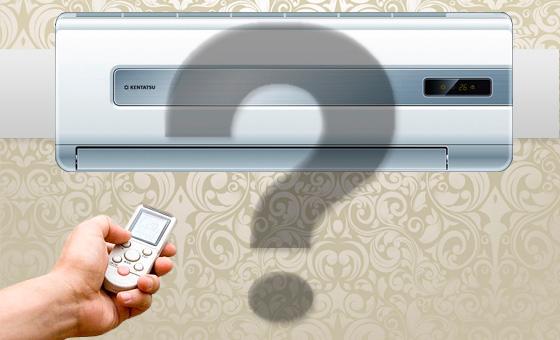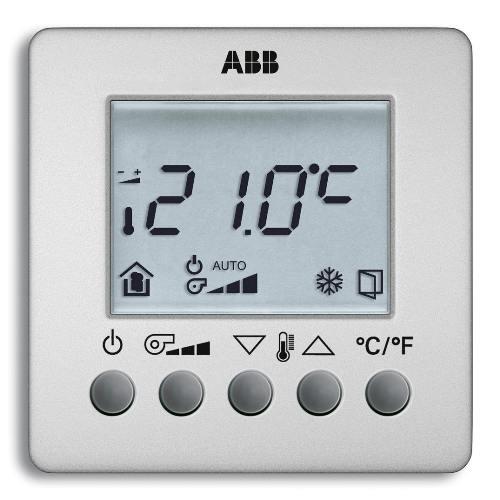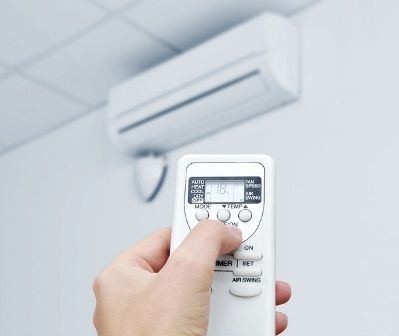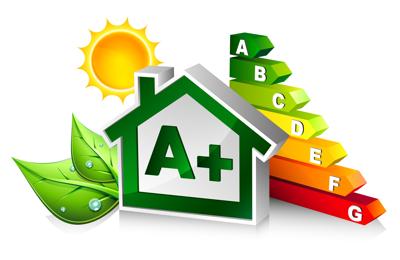Air conditioners create a favorable microclimate in the apartment. Technique controls the basic parameters of the air: temperature, humidity, cleanliness. By adjusting the equipment to comfortable indicators, the owners can enjoy the coolness and freshness. The HVAC market is filled with models of varying power, functionality and cost. Information on the main characteristics and features of air conditioners will help to make the right choice.
- Air conditioner for an apartment: what to look for
- Varieties of climatic technology
- Window block
- Mobile monoblock
- Split system
- Varieties of split systems
- Air conditioners for home: the nuances of choice
- Column air conditioner
- Duct air conditioner
- Detailed power calculation
- Functionality
- Climate technology classes
- Elite technology
- Middle segment
- A budget option
Air conditioner for an apartment: what to look for
- Device power. The cold performance of the equipment ensures a comfortable temperature. The power of the air conditioner is selected according to the area of the room and additional factors affecting the amount of heat. Approximate calculation formula: 1 kW per 10 m2.
- Installation site - determine where it is convenient to place the device: window, wall, floor.
- The purpose of the acquisition is only cooling or two full-fledged modes - cold and warm.
- Noise level - all equipment creates a sound background in the process of work. The level of the indoor unit of the split system does not exceed 30 dB.
- Electricity consumption. The indicator depends on the energy efficiency class, equipment marked with A (A +, A ++, A +++) will provide the lowest consumption.
- Air filtration system. All climatic technology is equipped with filters. The degree of air purification depends on their design. Fine filters trap dust, allergens and unpleasant odors. Special UV and electrostatic barriers eliminate viruses and bacteria.
- Manufacturers. The rating of HVAC brands helps to determine the popular brands of air conditioners. Reputable manufacturers offer models in various price ranges.
Varieties of climatic technology
First of all, they are determined with the type of air conditioner: monoblock or split system, consisting of two or more modules.
Window block
Installation of the air conditioner is carried out in the window opening of the living room or kitchen. Its power is from 1.5 to 5.5 kW. Advantages of technology:
- affordable cost;
- quick and easy installation.
There are more disadvantages of window monoblocks than advantages:
- the integrity of the window is violated, with insufficient sealing, cold air enters;
- the design is very noisy;
- a bulky system does not fit well into the interior of the room.
On a limited budget, a window air conditioner is an acceptable option, but due to the noise it is not recommended for the bedroom.
Mobile monoblock
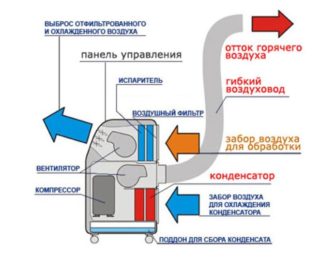
The floor-standing version of the air conditioner does not require a significant investment of time and money for installation. It is necessary to make a hole for a flexible hose that removes hot air. Mobile equipment is easy to transport, you can take it to your dacha. Among the cons:
- massive construction requires free space;
- high noise;
- condensate control, manual moisture drain.
Not the best option for a small apartment.
Split system
Structurally, the air conditioner consists of two parts:
- indoor unit - evaporator, cools (heats), purifies, humidifies the air;
- outdoor unit - condenser, includes compressor and cooling system.
The modules are connected by a copper piping through which the refrigerant circulates. There is always one external unit, and there can be up to 5 internal units. The multisplit system is designed to serve several rooms. This option will be cheaper than installing separate air conditioners. Split system advantages:
- wide functionality - modes of cooling, heating, dehumidification, humidification;
- air purification using a filter system;
- low noise due to the removal of the compressor outside the room;
- additional functions, intelligent settings;
- remote control;
- modern design of the indoor unit.
Varieties of split systems
By the type of installation of the indoor unit, the equipment is divided into several types:
- Wall mounted is the most common option. Small module, mounted on the top of the wall. Controls remotely. Differs in a wide range of decorative designs.
- Cassette - mounted behind a false ceiling, evenly distribute the cooled air. Air conditioner for a house with ceilings of at least 3 m.
- Wall-ceiling - installed at the bottom of the wall or under the ceiling. They take up little space, the cooled air does not get on people. The flow is directed upwards or along the ceiling.
- Column - models are designed for rooms with an area of more than 40 m2.
Disadvantages of split systems:
- the air conditioner requires professional installation and additional installation costs;
- high cost of equipment.
Air conditioners for home: the nuances of choice
A private house differs from an apartment in its spacious rooms. Individual design assumes different heights of ceilings, stairs in the hall. For large premises, several types of climatic equipment are offered:
Column air conditioner
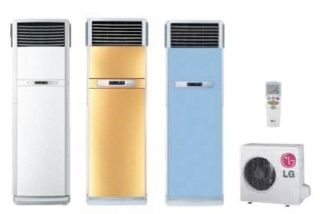
One of the variants of the split system is characterized by floor mounting, high power and large dimensions. A column-style installation directs air upward, contributing to an even cooling of the room. Models are offered with inverter and traditional compressor, various filtration systems. Columnar advantages:
- high performance for cold and heat;
- original appearance that easily fits into the interior;
- using the principle of natural convention when cooling.
The disadvantages include the high cost of the air conditioning device. Significant cold performance excludes the possibility of using in small rooms.
Duct air conditioner
For a country house with high ceilings, a duct air conditioner is the best option. Its indoor unit is installed in the duct behind the false ceiling. The cooling air ducts are distributed throughout the house through ventilation ducts. The use of plastic or corrugated air ducts is recommended. Channel system advantages:
- complex customization;
- hidden installation;
- safe distribution of cooled air, recommended for bedrooms and children's rooms.
Disadvantages:
- the design of air ducts is carried out simultaneously with the planning of the interior of the house;
- a complex system requires financial costs;
- reduces the height of the ceilings.
Detailed power calculation
A competent choice of an air conditioner is impossible without an accurate calculation of power. The performance of the equipment should take into account the volume of the room and all heat sources:
- The degree of illumination - the coefficient 40 W / m3 for the sunny side is added, 35 W / m3 for the average illumination, 30 W / m3 - the windows face north or are shaded.
- Types and number of household appliances, PCs and other equipment - the heat indicator is calculated as 30% of the power consumption. PC - 300 W, TV - 200 W.
- Number of people - depending on physical activity, people generate from 100 to 150 watts.
By adding all the values, the cooling capacity is calculated. On some models, it is designated BTU. The American designation is easy to translate: 1 BTU = 0.29 W.
Functionality
One of the questions that will have to be dealt with is an inverter or conventional air conditioner is better. Installing a block that controls the speed of the compressor motor saves energy and reduces wear on parts. Inverter systems are protected from voltage surges, ensure a minimum noise level. For the listed benefits, you will have to pay about $ 200.
Additional functions:
- Dehumidifier - removes excess moisture from the apartment.
- Automatic modes - "comfortable sleep" - reduction of power and noise at night. Self-diagnosis - testing for system problems. Forcing - operating at high power to quickly cool / heat a room.
- Multi-stage filtration - models of air conditioners are equipped with various options for purification systems. Adsorption filters remove dust and odors, plasma and ultraviolet filters get rid of bacteria and fungi. Other models enrich the air with pleasant smells, ozone, vitamin C.
- Self-cleaning - the device dries and disinfects its own parts.
- A timer that turns equipment on and off at a specified time.
Each additional feature increases the price. Not all of the announced features have a tangible effect.
Climate technology classes
The price of the air conditioning unit plays a decisive role in many cases. With sufficient funds, it is better to choose a premium air conditioner, which will create a safe and comfortable microclimate in the apartment and house.
Elite technology
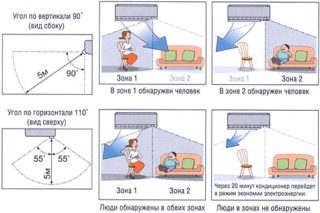
Home air conditioner Japanese assembly or manufactured in factories with strict quality control. Distinctive features of technology:
- intelligent systems of the "smart eye" type;
- wide range of operating temperatures;
- stylish design of the indoor unit, characterized by a variety of shapes and colors;
- functioning in modes: cooling, heating, ventilation, dehumidification and humidification;
- high-quality air purification.
Premium air conditioner manufacturers: Daikin, Airwell, Hitachi, FuJitsu General. The cost of models is from 850 to 1500 $. Operation 10-15 years, manufacturer's warranty 3 years.
Middle segment
Middle-class technology is a combination of quality and affordable cost. The equipment has fewer self-diagnostic capabilities and protection against operational malfunctions. The average price of equipment with a capacity of 2 kW is $ 700-850. The middle class includes brands Toshiba, Gree. Panasonic. Fuji Electric.
A budget option
The group united inexpensive air conditioners made in China, Korea and Russia. Low-cost technology loses in assembly quality, has no failure protection, and is characterized by noisy operation. Models are not equipped with multiple modes and automatic controls. The service life declared by the manufacturers is 7 years. Among the equipment there is a large percentage of defects. But do not be prejudiced against all budget products. Well-known brands are popular with consumers: LG, Ballu, Samsung, Haier.
The division into classes is rather arbitrary, manufacturers of elite climate control equipment offer middle-level models in their product lines. It is worth taking a responsible attitude not only to the choice of the air conditioner, but also to the place of purchase.The equipment is purchased in specialized stores. The equipment passport contains data for obtaining warranty service.
The optimal version of the air conditioner combines the best performance characteristics: inverter compressor, cooling and heating modes, automation, low noise level, multi-stage air purification. Such models can be found in the elite and middle class. If you want to save money, a budget class technique is suitable. Models of the LG and Ballu brands have established themselves as reliable household split systems. The duration of operation and the performance of the air conditioning unit depends on the quality of the installation. The installation is entrusted to professionals.
Maintenance of the air conditioner is no less important: timely cleaning and replacement of filters of the indoor unit. The outer part needs seasonal preparation: inspection, removal of leaves, fluff, and other debris.

